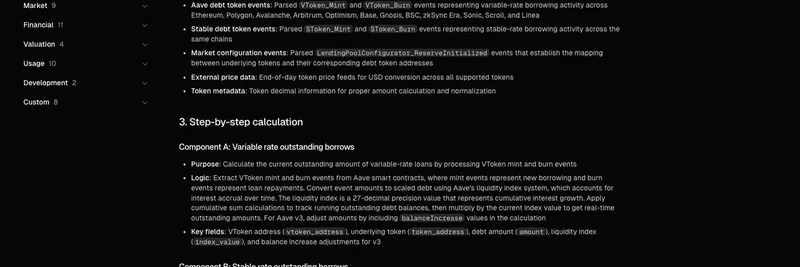If you're diving into the world of decentralized finance (DeFi), understanding key metrics like active loans can make all the difference. Recently, Token Terminal, a leading provider of crypto fundamentals data, shared a insightful tweet explaining exactly how they calculate "active loans" for Aave—one of the top lending protocols in the blockchain space. This transparency is a game-changer for traders, developers, and even meme token enthusiasts who rely on DeFi platforms to borrow assets for quick trades or liquidity plays.
Active loans, in simple terms, represent the total dollar value of outstanding borrowings where users are actively paying interest. It's a crucial metric because it directly ties into a protocol's business health—higher active loans often mean more revenue from interest fees. Token Terminal's approach uses AI-powered methodologies to ensure accuracy, pulling from raw blockchain data and aggregating it across multiple chains and product versions. They keep everything verified by their research team, so you know the numbers are reliable.
Their methodologies are neatly broken down into three sections for easy digestion:
Overview: This explains what the metric tracks. For active loans on Aave, it's the total value of outstanding borrowings across all lending markets, adjusted for interest accrual through liquidity index calculations.
Data sources: They draw from blockchain events like mints, burns, and transfers on networks such as Ethereum, Polygon, Avalanche, Arbitrum, Optimism, Base, Gnosis, BNB, zkSync Era, Sonic, Scroll, and Linea. This includes parsed events from lending pool configurators, reserve data updates, and token metadata for proper amount calculations.
Step-by-step calculation: Here's where it gets technical but straightforward. They split it into components like variable rate outstanding borrows (tracking mints and burns with liquidity indexes) and stable rate outstanding borrows (using stoken total supply data mapped to underlying tokens). Finally, they aggregate everything, convert to USD using end-of-day prices, and apply chain availability filters to get the total active loans value.
This level of detail isn't just for analysts—it's super useful for anyone in the meme token scene. Imagine borrowing stablecoins on Aave to ape into the latest viral meme coin without selling your holdings. Knowing how these metrics are derived helps you gauge market liquidity and potential risks, like sudden interest rate spikes during hype cycles.
Token Terminal's post is part of a broader push toward better onchain analytics, making complex data accessible. If you're building or trading in blockchain, tools like this can sharpen your edge. Check out the original tweet for more, or explore their platform for similar breakdowns on other protocols.
For meme token practitioners, this ties into the bigger picture: DeFi infrastructure like Aave often underpins meme ecosystems on chains like Solana or Ethereum. As active loans grow—up about $7B on Aave's Ethereum deployment since January—it signals stronger liquidity pools that could fuel the next meme surge. Stay informed, and you'll be better equipped to navigate the wild world of crypto.


